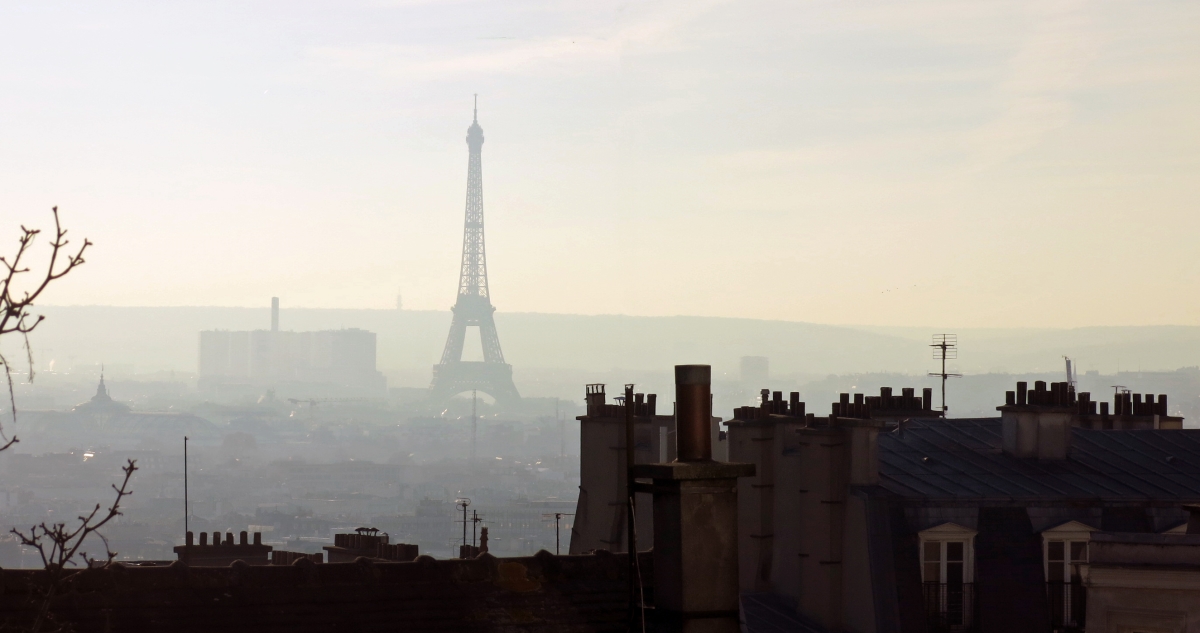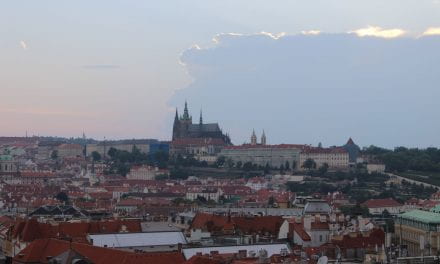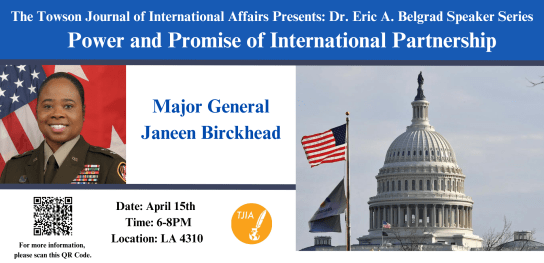By: Allison Guerra*
Air pollution in France is causing not only national health issues, but also major international environmental issues. Although pollutants have been a problem
for France since the industrial revolution, they recently have been brought to the forefront due to studies linking air pollution to thousands of avoidable deaths, a decrease in life expectancy, and an increase in upper respiratory problems (The Local, 2016). The issue of pollution transcends boundaries, as all states are affected by externalities created from one states’ pollution. Global climate change is intricately intertwined with the consequences of pollution, from rising sea levels washing away island states to extreme storms and weather patterns destroying populations. France is taking steps to lessen the damage of air pollution following the United Nations Climate Change Conference in Paris; however, advances in car technology, business practices, and proactive advisory alerts are necessary to halt the long-term negative health and environmental impacts. As a developed state that is now a leader within the European Union, France must be able to tackle domestic issues that are impacting states near and far.
Sources and Effects of Pollutants
A combination of France’s topography and weather patterns prolong the amount of time pollutants are in the atmosphere. The topography of France consists of the Alps and Pyrenees on its landlocked borders, a small elevation in the central south, and a flat, basin-like interior. The latter topography’s absence of substantial changes on the surface level, which could break up polluted weather patterns, make it susceptible to long-term air pollution. Inversion is the most common weather pattern that creates poor air quality in which warm air traps cold air and pollution close to the Earth’s surface. Typically occurring during the cold winter months, inversion envelops France in cold, dry, low quality air that is not suitable to breath (Beardsley, 2016). Not only a domestic concern, France’s air pollution is imposing negative externalities on neighboring states. Once in the air, eventual wind and rain displaces the pollution into Germany, Switzerland, Italy, or England, affecting the quality of their air, health, and environment.
Beyond weather patterns, two greenhouse emissions — carbon dioxide and particulate matter, are major pollutants contributing to the high levels of air pollution. As a major economic center of France and Europe, Paris receives hundreds of thousands of people per day via car from near and far. With open borders throughout the EU and proximity to the UK, workers from Germany, Spain, and England are able to commute to work in France, thus adding to the millions of domestic cars already on the roads. The increase of drivers has a strong correlation to the increase in carbon dioxide emissions, adding to the air pollution. Effects of carbon dioxide include environmental problems like acid rain and health problems such as upper respiratory disorders. As more people continue to drive and commute to France, carbon dioxide emissions increase while national health decreases. Even more deadly of a pollutant, particulate matter is microscopic dust created from solid and liquid aerosol particles released into the air (EPA, 2016). Winter heating creates particulate matter through burning of wood and natural gas, increasing the amount of particles released during cold weather. These small particles are invisible to the eye and therefore small enough to be absorbed into the body and bloodstream, causing lung disease and in some cases premature death (EPA, 2016). A recent report states that air pollution is tied to 48,000 French premature deaths per year and many of them could have been prevented by improving air quality (The Local, 2016).
Current Solutions
Although little can be done to alleviate weather related pollutant factors, France has been working to decrease man-made factors. During periods of high air pollution created by the aforementioned pollutants, France has taken numerous steps to bring levels back down. For example, Mayor Hidalgo of Paris alternated the days on which even and odd plated cars were banned from driving in the city, cutting in half the number of drivers and fuel emissions (Le Monde, 2016). Also, Mayor Hidalgo waived fees for the metro and bus systems, in order to promote the use of public transportation. However, these current solutions are short-term fixes of a sustained problem. In an attempt to create a more long-term solution, France is now requiring motorists in large cities to place visible stickers on their cars, each sticker indicating the age and cleanliness of the vehicle (Chazan, 2016). Cars without the sticker will be banned during the weekday or else fined by the police. This solution cuts the amount of daily vehicle emissions, lessening the particulate matter in the atmosphere and creating a marginal improvement. Furthermore, President Francois Hollande ratified the Paris Climate Agreement, a treaty formed during the United Nations Climate Change Conference in Paris. Entered into force on November 4th, 2016, the agreement targets greenhouse emissions, keeping global temperatures steady, and financial incentives to use alternative energy (UNFCCC, 2016). France has begun to take steps to decrease its impacts on climate change, but the population needs to support the governments’ environmental initiatives that will lessen the impacts of pollution both nationally and internationally.
Conclusion
In addition to what France is currently doing, the state must increase technological advancements and work with business owners to create sustainable long-term goals that will fully combat air pollution and its negative effects. Banning certain cars from driving is an effective way to combat air pollution; however, waiting until smog is visible to the eye before enacting such policies is an indicator that the solutions are created too late. People have already had long-term exposure to noxious pollutants for it to become visible. As a major economic hub of Europe and a country that has a booming tourism industry, France must follow through with its goals of the Paris Agreement as well as its policies of promoting electric cars, gaining public support and cutting fuel emissions. The state must become aware of its environmental impact and do its part in lessening effects on global climate change. If France wants to maintain its increased status in the European Union as one of the strongest countries following Brexit, it must be able to easily tackle problematic concerns such as air pollution.
Works Cited:
Beardsley, Eleanor. “Air Pollution Leads To Crackdown On Cars In Paris.” NPR. NPR, 8 Dec. 2016. Web. 11 Dec. 2016. http://www.npr.org/2016/12/08/504792278/air-pollution-leads-to-crackdown-on-cars-in-paris
“Air Pollution in France Kills 48,000 People Each Year.” The Local. The Local, 21 June 2016. Web. 11 Dec. 2016. http://www.thelocal.fr/20160621/pollution-in-france-kills-48000-people-each-year
Chazan, David. “France Announces ‘clean Sticker’ Anti-pollution Measures as Cities Choke on Smog.” The Telegraph. Telegraph Media Group, 11 Dec. 2016. Web. 11 Dec. 2016.http://www.telegraph.co.uk/news/2016/12/11/france-announces-clean-sticker-anti-pollution-measures-cities/
“Particulate Matter (PM) Basics.” EPA. Environmental Protection Agency, 12 Sept. 2016. Web. 11 Dec. 2016. https://www.epa.gov/pm-pollution/particulate-matter-pm-basics
“Pollution : Circulation Alternée Reconduite Jeudi à Paris, Instaurée Vendredi à Lyon et Villeurbanne.” Le Monde. Le Monde, 08 Dec. 2016. Web. 11 Dec. 2016. http://www.lemonde.fr/pollution/article/2016/12/07/pollution-circulation-alternee-a-lyon-et-villeurbanne-a-partir-de-vendredi_5044942_1652666.html
“Status of Ratification.” The Paris Agreement. United Nations Framework Convention on Climate Change, n.d. Web. 11 Dec. 2016. http://unfccc.int/paris_agreement/items/9444.php
*Disclaimer: The content contained in the following material is the sole ownership of the author and does not reflect the views of the Towson University Journal of International Affairs nor Towson University in any respect whatsoever








Bacause picture. Yes.
Great points all. Also, the intricacies of the stone work on France’s many cathedrals and statues is being wiped away by acid rain, leading to the restoration of many landmarks over the last couple of decades. Sadly, only the most prominent of structures can be restored.
thanks for your information
Lifestyle Blog Thank you.